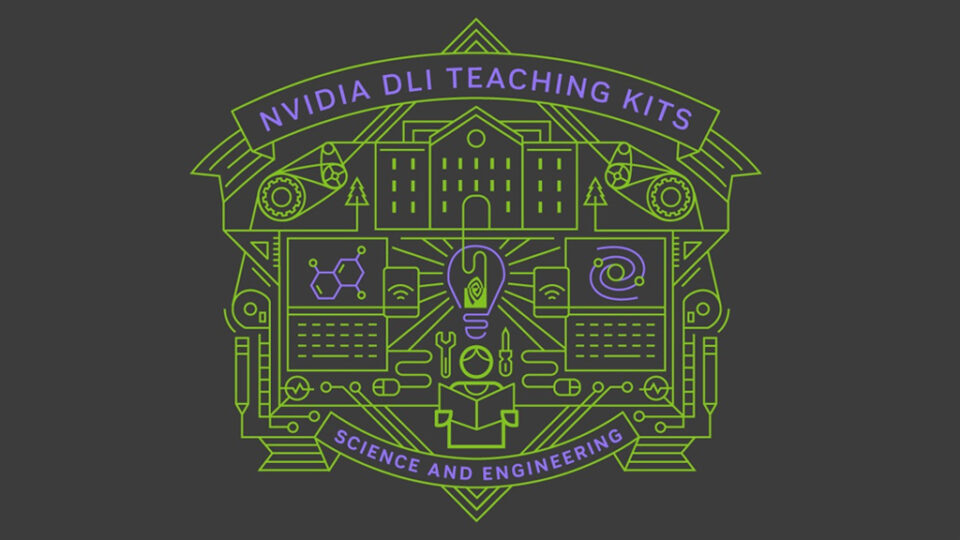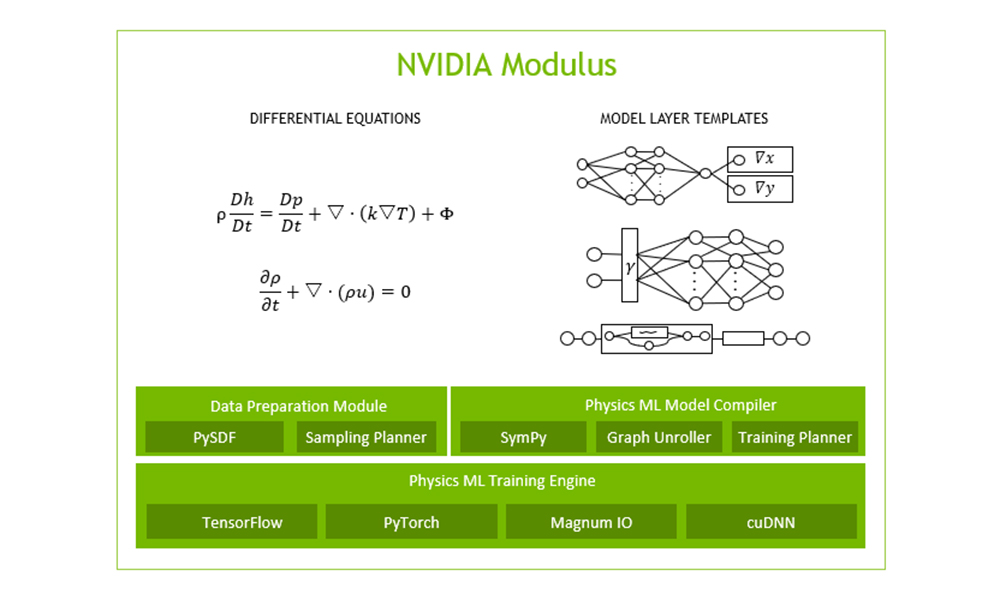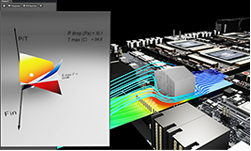Simulations are quintessential for complex engineering challenges, like designing nuclear fusion reactors, optimizing wind farms, developing carbon capture and storage techniques, or building hydrogen batteries. Designing such systems often requires many iterations of scientific simulations that are computationally expensive to run. Solvers and parameters must often be tuned individually to each system studied. Thanks to AI and physics-informed machine learning (physics-ML) frameworks such as NVIDIA PhysicsNeMo, it is now possible to overcome these challenges and turbocharge these simulations.
NVIDIA PhysicsNeMo is a state-of-the-art open-source physics-ML platform that blends physics with deep learning training data to build high-fidelity, parameterized surrogate models with near-real-time latency. Engineers and scientists can explore and build physics-based AI surrogate models using NVIDIA PhysicsNeMo. These principles are being applied across a wide range of solutions, from manufacturing to healthcare, including high-performance computing (HPC) scale applications like weather forecasting and industrial digital twins.
DimensionLab, an NVIDIA Inception partner, is a software studio building next-generation tools for engineers, scientists, makers, and creators. With an increased focus on user experience, simplicity, and modern design, the DimensionLab team is leveraging recent advancements in scientific machine learning to revolutionize how numerical simulation can be used for technology and product development.
Recognizing the significant potential of NVIDIA PhysicsNeMo, DimensionLab used it as a backbone of their flagship product, a web platform for AI-driven engineering called Siml.ai.
Simplifying AI surrogate modeling for domain experts
Siml.ai provides powerful no-code abstractions within its Model Engineer application, which enables engineers to express their domain expertise more natively rather than having to become proficient in AI. The application builds on the PhysicsNeMo interface. This enables domain experts to express their knowledge of the system using governing partial differential equations in symbolic form, for example, rather than in terms of how the loss function of a deep learning model captures such information.
The goal of Model Engineer is to simplify and streamline the entire process, including:
- Constructing large datasets from traditional simulation exports or physical sensors that collect precise measurements from real-world experiments.
- Constructing the correct model architecture for the simulators’ desired capabilities and constraints.
- Training and aggressively optimizing the learnable simulators in high-performance, GPU-powered cloud or HPC centers without the need to deal with the complexities of managing the cloud infrastructure.
A flowchart-style visual editor in Model Engineer sets up the problem to launch training on the PhysicsNeMo platform. Under the hood, the visual representation of the flowchart diagram is compiled into NVIDIA PhysicsNeMo API calls. It represents the entire simulator state, with parameterized variables, neural network architectures, geometries, or constraints.
You can drag-and-drop CAD geometries into the geometry node where they are automatically converted into STLs for the NVIDIA PhysicsNeMo tessellation module. They are simultaneously converted into a fast web format for a 3D geometry viewer.
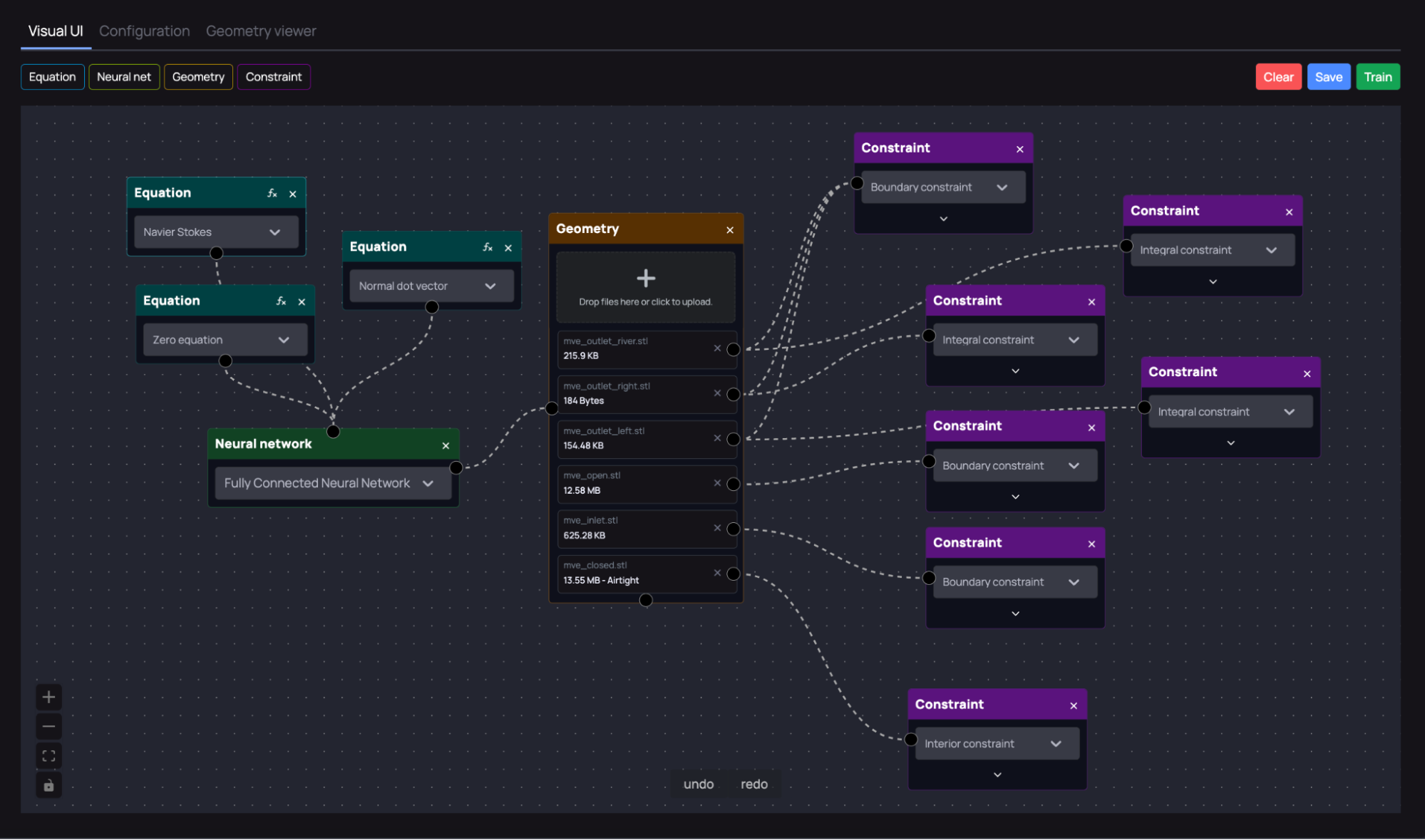
These Siml.ai interactive and visual tools free engineers and scientists to focus on exploring physics-ML models for simulating physics, without dealing with its complexities. They can start training their simulation models in just a few clicks by creating and deploying an Environment through the platform. The Environment uses a Simulator Inference and Training Environment (SITE): a containerized solution that does all the heavy lifting to compile a visual representation of the simulator into code for a trainable PhysicsNeMo simulator. SITE is optimized for NVIDIA GPUs and offers everything needed for working with AI-driven simulators.
The second part of the Siml.ai platform is a tool for real-time visualization of the simulation results, called Simulation Studio. It is a hybrid application (web-based and native), based on Unreal Engine and its pixel streaming capabilities. It runs the rendering in the cloud and sends rendered frames as a video stream to the Siml.ai frontend.
Users can load parameterized simulators created in Model Engineer into the Simulation Studio to create interactive digital twins for fast virtual physics experimentation workflows.
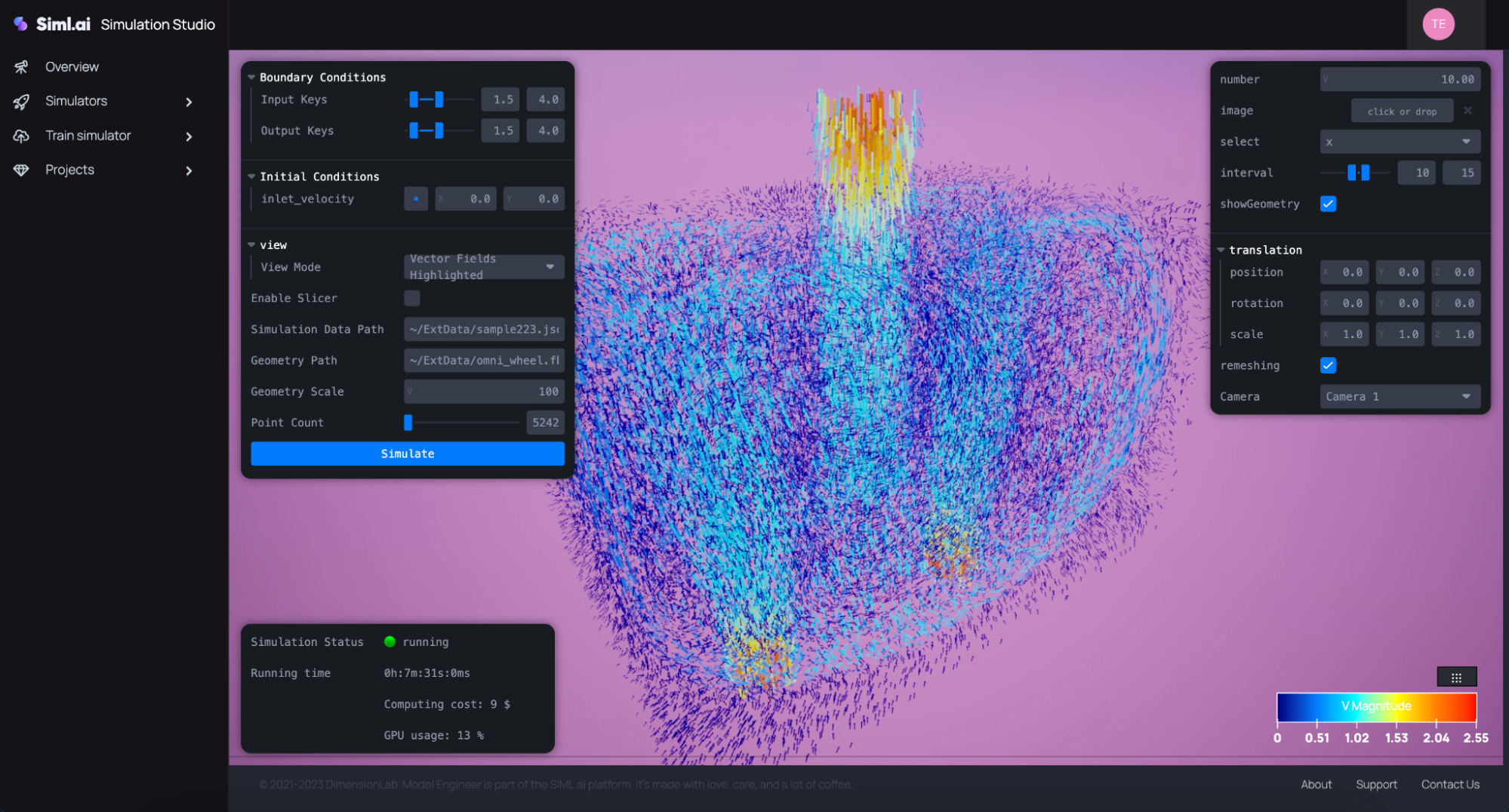
Physics-ML surrogate models save cost and time
To demonstrate the impact of these new tools and workflows in leveraging physics-ML, developers at DimensionLab used Siml.ai for a specific customer case study. The objective was to quantify the value of frameworks like NVIDIA PhysicsNeMo and Siml.ai in building physics-ML models for a small consulting company with limited budget. The goal was to deliver an AI solution on par with the output of an industry standard simulation software, but with a fraction of the cost and time.
The customer needed numerical simulations of a river flow into a hydropower plant to analyze the flood damage from past events. It took them 4 years to finalize and fine-tune the mathematical model in a popular numerical solver, and they spent months on complex geometry meshing.
In contrast to classical modeling and simulation approaches, developers at DimensionLab helped the customer to apply physics-ML approaches to this engineering challenge. They created multiple comparable AI-driven simulations in Siml.ai that leverage Navier-Stokes equations, physics-informed neural networks, and Fourier neural operators from the NVIDIA PhysicsNeMo framework.
These models took just 3 weeks to develop and train multiple times with various configurations and parameterizations. They resulted in 96% cost and time savings compared to the previous approaches tried by the company.
Simulation for engineering resources
To learn more, see the Siml.ai documentation and Siml.ai training content. You can also read more about the tools in the Siml.ai blog.
To learn more about physics-ML and NVIDIA PhysicsNeMo, check out the NVIDIA Deep Learning Institute course, Introduction to Physics-Informed Machine Learning with PhysicsNeMo and visit the NVIDIA/physicsnemo repo on GitHub.
Learn more about NVIDIA Inception, designed to help startups evolve faster through cutting-edge technology, gain opportunities to connect with venture capitalists, and access to the latest technical resources from NVIDIA.


